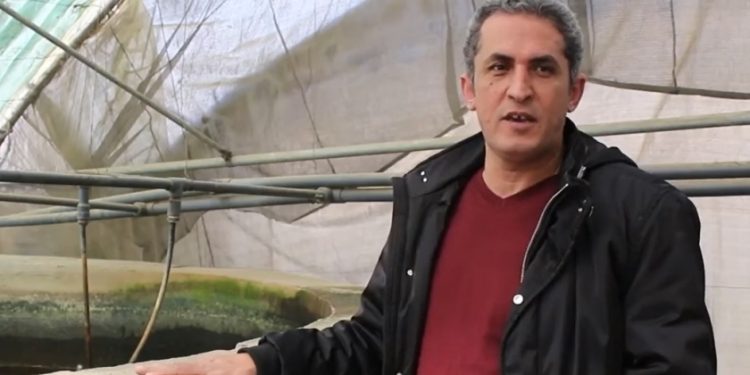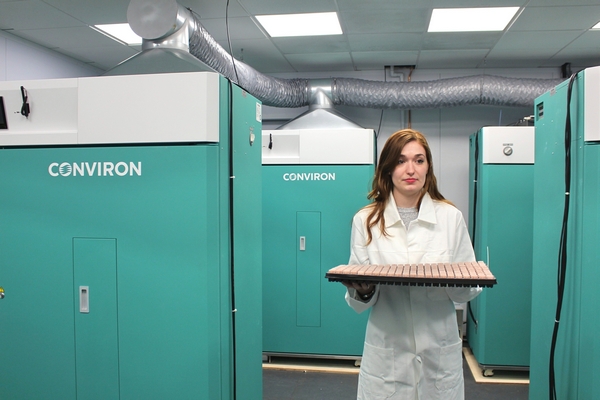Humanity knew agriculture with the presence of man on the face of the earth, however, for thousands of years, the prevailing belief remained that soil, whether clay or sand, in addition to water, air and light, are the most important ingredients for agricultural activity, and agriculture is not possible without it, until experts reached the conclusion A new method of cultivation without soil, called “hydroponic”, depends on cultivation in water, while providing the rest of the other ingredients necessary for plant growth, and according to Dr. The roots of the plant, and provide it with the minerals, salts and various nutrients it needs.
Tawfiq said, in an interview with Al-Watan, that researchers in the field of hydroponic cultivation were able to identify the elements that plants need for growth, and they added them to the water, in specific concentrations and proportions, so that some types of plants could feed on them, without the need for soil. Following is the text of the dialogue:
To begin with, what is meant by hydroponics or agriculture known as “hydroponics”?
Hydroponics in its simple sense is not new to many of us, especially those who had personal experiences in growing fenugreek and beans indoors without soil, by placing fenugreek seeds in a wet cloth, or immersing the beans in water, and leaving it for several days, until the germination process begins. It depends on planting plant seeds or seedlings in an aqueous solution that contains the main nutrients needed by the plant, ranging from 12 to 16 elements, or growing the plant in a solid, inert substance, so that it does not interact with the plant’s nutrient solution.
Dr.. Ahmed Tawfik: The ancient Egyptians were the first to know the planting of plants in water..The papyrus plant is the largest example, and the temples document the experience
Here it must be said that the ancient Egyptians were the first to know aquaculture, and perhaps the “papyrus” plant is the most prominent example of this type of cultivation, and there are drawings and inscriptions on some temples that refer to this type of cultivation, but it began to pay attention to it scientifically in universities and research centers in the wake of World War I, when some navies began to rely on this type of agriculture to provide food for the crews working on it, then this interest increased in light of the growing fears of an imminent hunger crisis that humanity might suffer from, as a result of the land’s inability to meet the accelerating food needs of humans.
What is the importance of aquaculture in light of the increasing threats as a result of climate change?
Hydroponics without soil is seen by many scientists as the best solution to deal with the problems of water scarcity and climate change, and many countries have begun to expand this type of agriculture, with the aim of producing larger quantities of food, in limited areas, and by consuming a small amount of water. This confirms the possibility of Arab countries, which suffer from a shortage of agricultural land due to its desert nature, including Egypt, of course, relying on this type of agriculture, with experts estimating that high temperatures will lead to a decrease in the production of agricultural crops, primarily wheat. Which is expected to decrease its production by up to 15%, at a time when the demand for food is increasing as a result of the continued population growth, which puts increasing pressure on natural resources, which cannot meet this increasing demand.
Among the other positive things, which are no less important than providing more sources of food for humans, is that through the use of the method of cultivation without soil, chemical fertilizers are dispensed with, the surplus of which usually leaks out of the plant’s need in traditional agriculture to the soil. Hydroponics protects the plant from pests that may attack it from the soil, as is the case in traditional agriculture, which helps to increase agricultural productivity per square meter.
It is possible to plant 200 leafy crops such as lettuce and dill per square meter using modern technologies. In traditional agriculture, 12 plants are grown per square meter.
Is cultivation without soil economically feasible, especially as it is usually done on roofs or in relatively small areas?
– Hydroponic cultivation is very feasible, and in this regard it can be said that through the use of soilless cultivation technology, it is possible to plant between 150 to 200 plants of leafy crops, such as lettuce, dill and parsley, per square meter, while in traditional agriculture they are grown About 12 plants per square meter. As for fruit crops, such as tomatoes, eggplant, strawberries, cucumbers and peppers, 16 plants can be grown, compared to only 4 plants per square meter in traditional cultivation, and the cycle of plant growth and maturity is less, for example lettuce in traditional cultivation needs 70 days, but in the case of hydroponic cultivation, the cultivation cycle is reduced to 30 days only.
What is the possibility of expanding the use of hydroponics in Egypt?
– Hydroponics requires large investments in the beginning, to establish its own greenhouses, but it must be noted that the expected return on investment in this type of agriculture is not less than 30 to 40% per year, in addition to providing other returns, by protecting the health of consumers through Eat these safe and non-polluting products, especially since they are completely free of any chemicals or harmful gas concentrations.
Hydroponic cultivation
Hydroponic cultivation represents one of the best options for increasing agricultural productivity in Egypt, as it helps to save water and energy, and to increase productivity per unit area. We mention here that the percentage of water saving, compared to regular agriculture, reaches 95%, in addition to the economic importance of hydroponic products If produced in large quantities, it can be exported abroad.
A source: https://www.elwatannews.com












